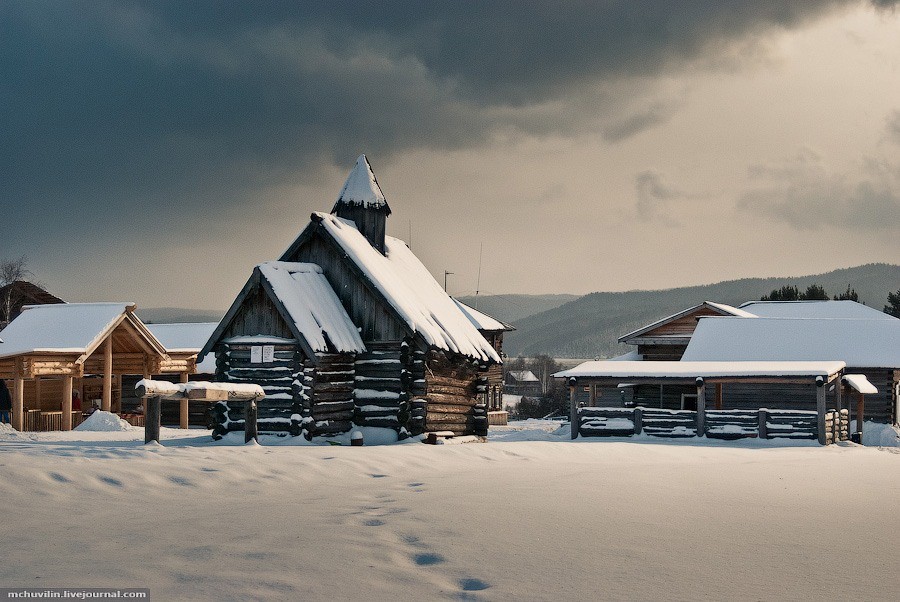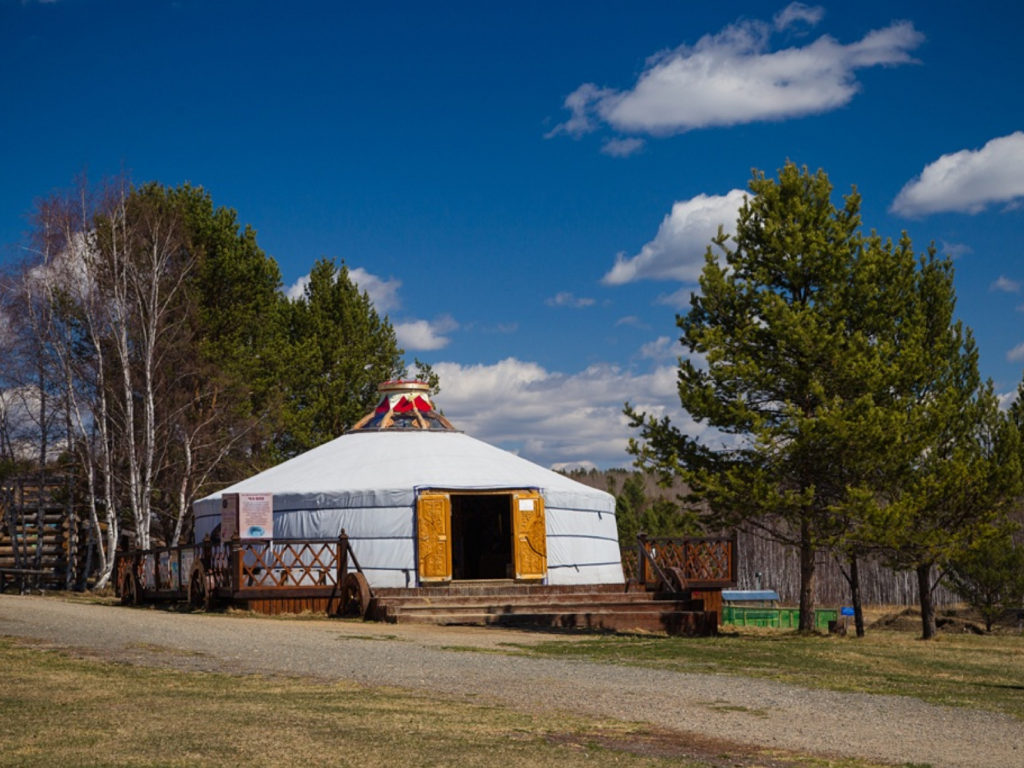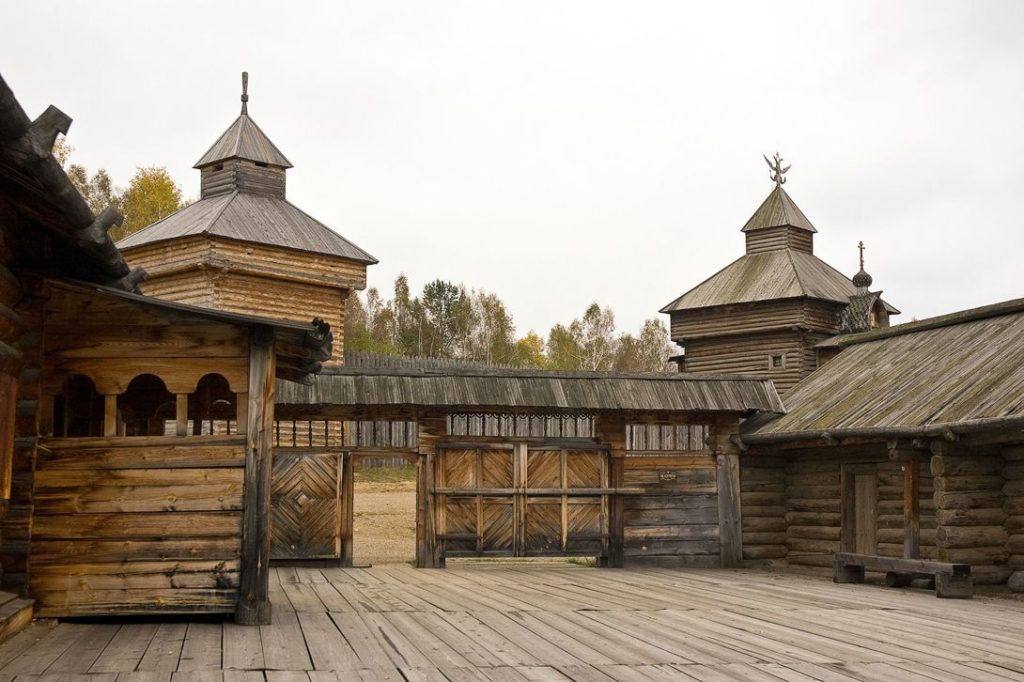The Taltsy Architectural and Ethnographic Museum is a unique collection of historical, architectural and ethnographic monuments of the 17th – 20th centuries. It is located on the right bank of the Angara at the 47th kilometer of the Baikal tract on the road from Irkutsk to Lake Baikal. The open-air museum complex attracts visitors with the possibility of direct acquaintance with the material and spiritual culture of the peoples of the Baikal region. The open-air museum has recreated four historical and cultural zones: Russian, Buryat, Evenk and Tofalar. Buryats, Evenks and Tofs are indigenous peoples of the Baikal region.
The funds of the Taltsy Museum include over 40 architectural monuments and more than 8000 exhibits telling about the life of Siberian villages in the 17th-19th centuries… About 140 thousand people visit it annually.

What to see?
The towers and palisade of the Ilimsk fortress – the formidable fortifications have miraculously survived since the 17th century, in the 20th century they were restored and now everyone can enter the main gate of one of the first Russian fortress cities in Eastern Siberia and see maps of the area, weapons and ancient coins.
Separately, there are Buryat yurts and Evenk chums and storage facilities. In the Buryat ulus, reconstructed on a meadow on the high bank of the Angara, you can get acquainted with the life of a shaman and feed a horse and a white camel. And in the Evenk camp you can assess how much labor was required to build a tent and keep supplies from gluttonous animals.


Crafts are being recreated in Taltsy. You can go to the workshop of a potter, blacksmith, glassblower, weaver and see how clay is kneaded or embroidery, and here you can buy a whistle or a wooden toy. The blacksmith festival is held here every September. The works of the master casting artists add to the fairytale hut. There is already a house with a cat, a stove, giant cauldrons and even cast-iron slippers nailed to the floor.
It is best to visit Taltsy during national holidays – Christmas, Buryat New Year, Easter and Midsummer’s Day. In winter and early spring, you can not only view architectural monuments from the outside and from the inside, but also take part in traditional Russian folk festivities and entertainment.
The museum cooperates with the best creative teams of the city, has extensive experience in holding regional and international events.
The basis of the museum is the wooden buildings of small towns and villages of the Irkutsk region, caught in the flooded zone during the construction of a cascade of hydroelectric power plants on the Angara in the second half of the XX century.
Earlier, on the site of the museum, there was a large village of Taltsy, in which there was even an industry (a glass factory, later transferred to the city of Tulun), but during the construction of the Irkutsk hydroelectric power station and the formation of a reservoir, the main part of the village was flooded. The museum was established on a hill.

History
In the early 60s. XX century, during the construction of the Ust-Ilimsk hydroelectric power station, it became necessary to save the unique historical and architectural monuments of all-Union significance – the Spasskaya Passage Tower (1667) and the Kazan Gateway Church (1679) of the Ilimsk fortress, which fell into the zone of the upcoming flooding of the Ust-Ilimsk reservoir. During this period, for the first time in the Soviet Union, the problem of preserving elements of traditional folk culture, and especially unique wooden architecture, was raised on a large scale. In the regions of the country, attempts were made to create open-air museums. The Irkutsk region was one of the few where this was done.
The museum becomes more and more interesting every year. Now, in the museum you can ride on a cart or sleigh and sweep with the breeze from the ice slide on a cow’s skin! Or look at how gold was mined on the rivers.

Translate Anastasija Olesova, The University of Manchester , 3rd year, BA (Hons) Politics and Russian